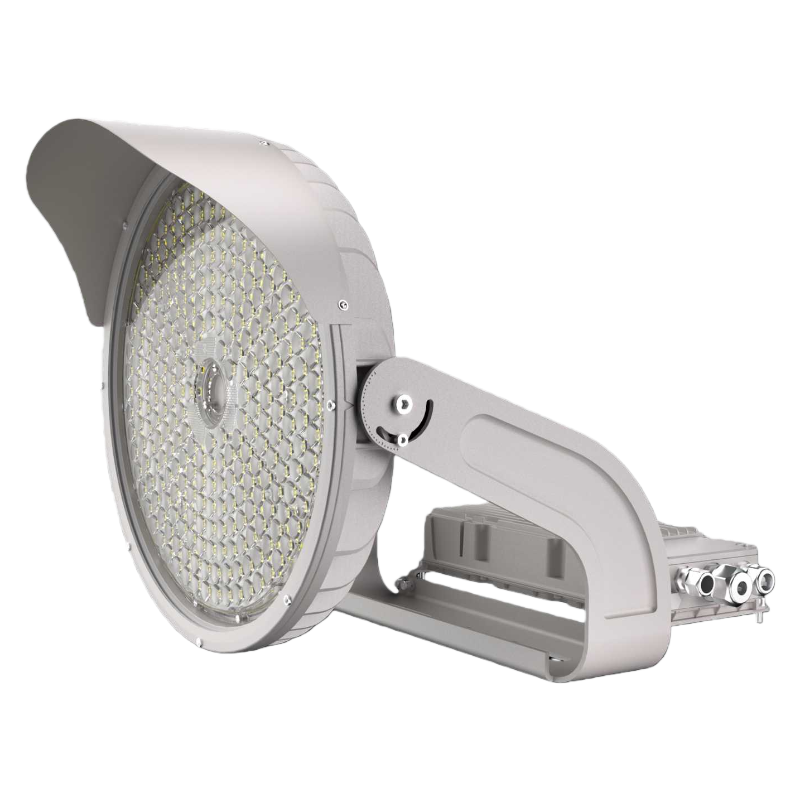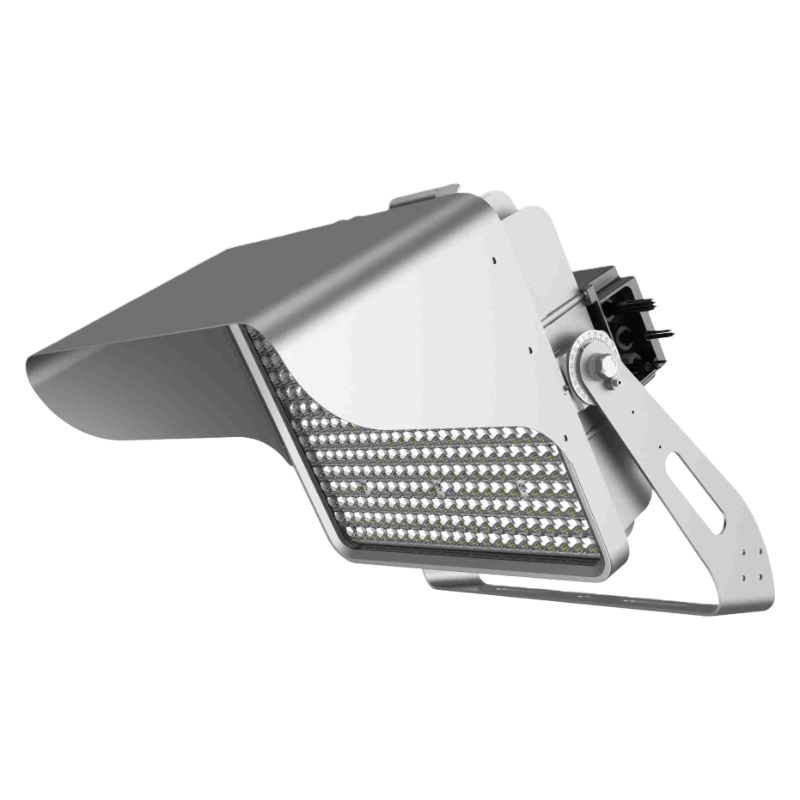Are LED lights good for street lights?
Street lighting is the unsung hero of urban life—guiding commuters, enhancing public safety, and shaping the character of neighborhoods long after sunset. For decades, cities relied on high-pressure sodium (HPS) lamps, but their inefficiencies and limitations have pushed communities toward a better solution: LED technology. Today, over 75% of new street light installations worldwide use LEDs (LEDinside, 2024), but the question remains: Are LED lights truly good for street lights? The answer is a resounding “yes”—and this blog breaks down why, exploring their advantages in energy savings, durability, safety, sustainability, and smart integration, with real-world data to back every claim.
1. Unmatched Energy Efficiency: Cut Costs & Reduce Carbon Footprints
Energy consumption is the biggest pain point for traditional street lighting. HPS lamps typically deliver just 60–100 lumens per watt (lm/W), meaning they waste a lot of energy as heat. LEDs, by contrast, operate at 130–200 lm/W—a 50–70% efficiency boost that translates to massive cost and carbon savings.
-
Cost Savings**: A medium-sized city with 10,000 street lights can save $1–1.5 million annually by switching from 150W HPS to 100W LEDs (at $0.15/kWh). For example, the city of Los Angeles replaced 215,000 HPS lamps with LEDs in 2022, cutting annual lighting costs by $10 million.
-
Carbon Reduction**: Every 100W LED street light saves ~850 kWh per year, equivalent to reducing 0.6 metric tons of CO₂ emissions (EPA, 2024). A city with 50,000 LEDs avoids 30,000 metric tons of CO₂ annually—equal to taking 6,500 cars off the road.
Key Math: A 120W LED (180 lm/W) produces 21,600 lumens—same as a 250W HPS (85 lm/W)—but uses 52% less energy.
2. Ultra-Long Lifespan & Low Maintenance: Minimize Downtime
Traditional street lights require frequent bulb replacements—HPS lamps last just 15,000–24,000 hours (1.7–2.7 years of 12-hour nightly operation). This means cities spend millions annually on labor, equipment, and bulb inventory. LEDs change the game with a lifespan of 50,000–100,000 hours (5.7–11.4 years), cutting maintenance needs by 70–80%.
-
Reduced Labor Costs: Replacing a single street light costs $50–$150 (truck, crew, bulb). For 10,000 lights, annual HPS replacement costs hit $250,000–$750,000. LEDs need replacement just once every 7–10 years, slashing this to $25,000–$100,000.
-
Less Downtime: Dark street lights are safety hazards. LEDs’ long lifespan means fewer outages—cities report 95%+ street light uptime after LED upgrades, vs. 80–85% with HPS.
3. Superior Safety Performance: Brightness That Protects
Street lighting’s core job is to keep roads and sidewalks safe—and LEDs excel here by delivering consistent, high-quality light that improves visibility for drivers and pedestrians.
a. Optimized Color Temperature (CCT)
LEDs offer adjustable CCT (3000K–6500K), unlike HPS which emits a warm yellow glow (2200K–2700K) that distorts colors. The sweet spot for street lights is 4000K–5000K (natural white), which balances visibility and comfort: drivers can distinguish traffic signs, pedestrians, and obstacles 30% faster than with HPS (Transportation Research Board, 2023).
b. High Color Rendering Index (CRI)
CRI measures how accurately light shows colors. HPS has a CRI of just 20–30, making it hard to tell red from green. LEDs have a CRI of Ra 70–90, critical for safety: pedestrians in dark clothing are 40% more visible to drivers under Ra 80 LEDs than HPS (National Highway Traffic Safety Administration, 2024).
c. Uniform Illumination
LEDs use precision optics to distribute light evenly, eliminating the “hotspots” and “dark zones” common with HPS. This reduces glare (a major cause of nighttime accidents) and ensures consistent brightness across roads—cities with LED street lights report 15–25% fewer pedestrian and vehicle collisions (Insurance Institute for Highway Safety, 2023).
4. Environmental Sustainability: Greener Than Traditional Lamps
Cities are prioritizing sustainability, and LEDs align perfectly with eco-friendly goals—unlike HPS and fluorescent lamps, which contain toxic materials and waste energy.
-
No Toxic Metals: HPS lamps contain mercury (5–10 mg per bulb), which leaches into soil and water if not disposed of properly. LEDs have no mercury, lead, or other hazardous materials, making them easy to recycle.
-
Lower Light Pollution: LEDs’ directional light output minimizes “skyglow” (light escaping into the atmosphere), which disrupts wildlife and astronomy. Shielded LED fixtures reduce skyglow by 50–70% compared to unshielded HPS.
-
Solar Compatibility: High-efficacy LEDs pair seamlessly with solar panels, creating off-grid street lights for rural areas. Solar-LED systems reduce reliance on fossil fuels and avoid costly grid extensions—ideal for developing regions.
5. Smart Integration: Powering the Cities of Tomorrow
LEDs aren’t just lights—they’re the backbone of smart city infrastructure. Unlike HPS, which is “dumb” and can only be on or off, LEDs integrate with advanced technologies to add value beyond illumination:
a. Adaptive Dimming
LEDs with 0–10V or DALI dimming adjust brightness based on traffic. For example, lights dim to 30% at 2 AM (when roads are empty) and brighten to 100% during rush hour—saving an extra 20–30% on energy, on top of baseline LED efficiency.
b. IoT Sensors
Smart LED street lights can include sensors for traffic monitoring, air quality detection, noise levels, and even Wi-Fi hotspots. These “multi-functional poles” collect data to optimize city services: London’s smart LED street lights, for instance, alert authorities to traffic jams and air pollution spikes in real time.
c. Remote Management
Cities can control thousands of LED street lights via a central dashboard, turning them on/off, dimming, or troubleshooting remotely. This eliminates the need for crews to patrol for outages—saving time and money while improving responsiveness.
6. Addressing Common Concerns: Are There Any Downsides?
Critics sometimes cite higher upfront costs as a drawback, but this is a short-sighted view. While LEDs cost 2–3x more than HPS upfront, their TCO (Total Cost of Ownership) is 50–70% lower over 10 years due to energy and maintenance savings. For example, a $200 LED fixture costs $1,200 total over 10 years (energy + maintenance), vs. $3,000 for an $80 HPS fixture.
Another concern is glare, but this is solved with proper fixture design (e.g., shielded optics) and CCT selection (avoiding 6500K+ cool white for residential areas).
7. Real-World Success: LED Street Light Transformations
The proof is in the results—cities worldwide are reaping the benefits of LED street lights:
-
Seattle, USA: Replaced 40,000 HPS lamps with LEDs in 2023. Energy use dropped 62%, maintenance costs fell 75%, and pedestrian accidents decreased by 22%.
-
Berlin, Germany: Upgraded 140,000 street lights to smart LEDs. The city saves €12 million annually on energy, and sensors in the lights help manage waste collection and parking.
-
Bangalore, India: Installed 200,000 solar-LED street lights in rural areas. This brought electricity to 500+ villages, reduced crime by 35%, and created local jobs in maintenance.
Conclusion: LEDs Are the Clear Choice for Street Lights
The question “Are LED lights good for street lights?” isn’t just answered with a “yes”—it’s answered with a “why wouldn’t you?” LEDs deliver unmatched energy efficiency, decades-long lifespans, safer illumination, environmental sustainability, and the flexibility to power smart cities. While upfront costs may give pause, the long-term savings and benefits far outweigh them.
As cities grow and prioritize efficiency, safety, and sustainability, LEDs have become the gold standard for street lighting. They don’t just light up roads—they light up a better, greener, and smarter future for urban communities. For any city looking to upgrade its street lighting, LEDs aren’t just a good choice—they’re the only choice.











